Leh – Alchi – Leh – Delhi, August 20-24
August 20 Tuesday: Leh – Alchi
After sleeping for seven hours, I woke up around 7am feeling great. The view of Stok Kangri from my balcony was fabulous: blue sky and a snow-cladded peak. Penny and I had a most enjoyable breakfast in the garden with fresh apricot, muesli, omelet, toast and coffee. The garden with several apple trees, rows of vegetables and colourful flowers is homely. I spent the whole morning working on my photos.
At noon, I left the hotel to look for the Chopsticks Noodle Bar a famous eatery in Fort Road. Lily speaks highly of Juma Malik the owner and the food. I like the place which has simple but stylish decorations and the prices are reasonable. I ordered thukpa (noodle) and asked a man whether Juma was around. He replied, “I am Juma”. I told him about my encounter with Lily’s group during the Markha Valley trek. Juma is sincere and open and we chatted for a long time about food, development in Ladakh, his plan to expand and travel. I was hungry and he recommended a stew with plenty of vegetables which came from his father’s farm. The food is delicious with fresh ingredients. Juma offered to arrange a car to take me visit four famous monasteries and the Shey Palace on August 22.
By now, I knew all the main streets in Leh and found my way to the bus terminal without problem. The minibus to Alchi set off at 4pm. The 40-km journey took over 2 hours. It first took the Srinagar – Leh Highway driving through Basgo and Saspool. The scenery is impressive with the Indus running in the middle. High barren mountains soar on both sides of the highway. The surreal landscape is only tamed by settlements around Basgo and Saspool where extensive green fields of wheat and barley, apricot trees and tall poplars are found.
Given the geology of the region, construction of the highway must have been difficult. Maintenance is also a problem as many sections are still under construction or repair. Several bridges are being constructed to replace old ones. But I did not see machinery being used: the workmen are only using their hands and simple tools.
 |
|
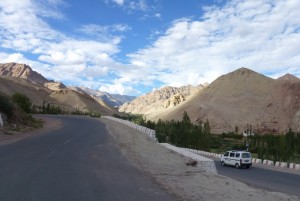 |
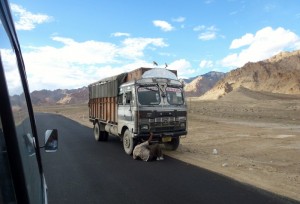 |
Alchi is small and rural with a population of about 750. Visitors flock to this village to see the Alchi Gompa. I asked Juma for places to stay and he recommended the guesthouse next to the gompa. I took a simple room with toilet for 700 rupees and had a mushroom curry for 150 rupees. There was no noise and I had a wonderful sleep.
August 21 Wednesday: Alchi
With the help of the manager of the guesthouse, I hired a car with a driver for 3000 rupees. I had breakfast at 7am and set off at 7:45am.
The first stop was Lamayuru 57 km from Alchi and 127km from Leh. The journey took almost two hours. First, we crossed the Indus to get back to the Leh- Srinagar highway. Then we crossed the Indus again, drove along a spectacular gorge and past the Moon Valley before arriving at Lamayuru.
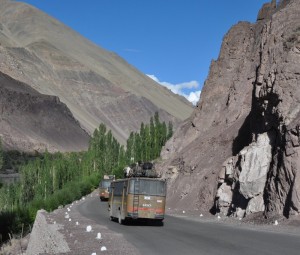 |
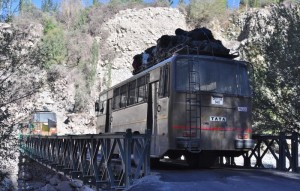 |
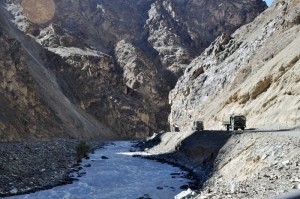 |
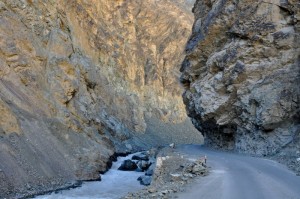 |
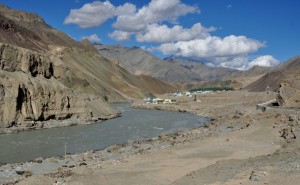 |
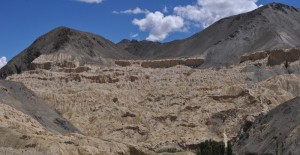 |
Lamayuru monastery is spectacularly located on an eroded mass of rock below towering mountains. Legends say that the monastery was founded in 11th century by Mahasiddhacharya Naropa who visited the spot for meditation. Another historical account says that it was built by the king of Ladakh during 10th century. Later the king bestowed the buildings to the “Great Translator’ Rinchen Zangbo. Originally founded as a Kadam-pa establishment, it was subsequently offered to the Dri-gung-pa monastic order (the Red-hat Sect of Buddhism) in the mid-16th century by King Jamyang Namgyal. It is now the principal monastery of the Dri-gung-pa order.
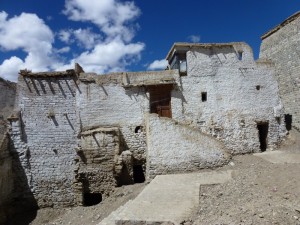 |
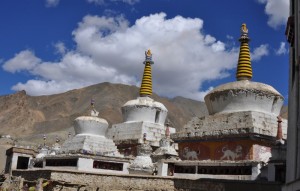 |
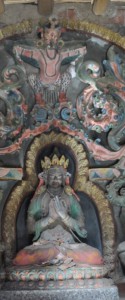 |
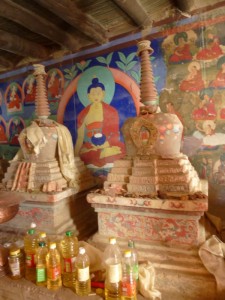 |
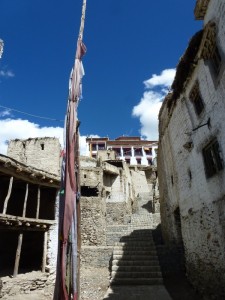 |
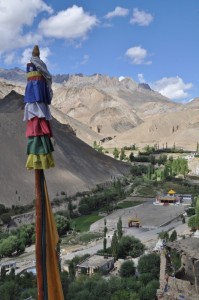 |
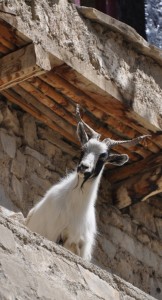 |
The monastery is inhabited by about 200 permanent resident monks. Many tourists spend a night in Lamayuru in order to attend a religious ceremony in the early morning. But today it was void of monks as they had gone to Leh for Dalai Lama’s preaching. I only saw half a dozen monks during my visit.
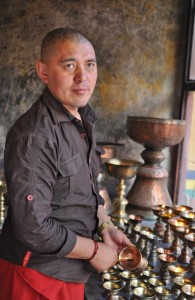 |
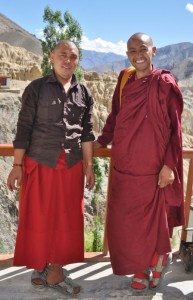 |
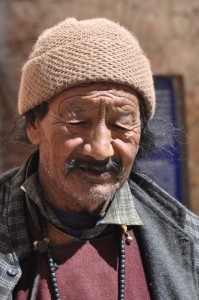 |
Lamayuru hosts two annual mask dance festivals in the 2nd and 5th months of the Tibetan lunar calendar. The burning of effigies is an important ritual during the festival marking the destruction of the ego in people.
In the Dukhang (the assembly hall), there is a cave which is said to be the one Naropa had medicated. I stepped into a small hall which has half a dozen small stupas and many colourful hats worn during the festival. The Gonkhang (the temple) is the oldest part of the complex. The monastery has impressive wall paintings, assortment of thangkas, scriptures, murals and statues of various forms of Buddha and other deities. I had a good view of the Moon Valley from the monastery.
My next stop was Rizong Monastery (76km from Leh). We crossed the Indus and drove along the highway till we reached a side road. He drove another 5km on a dirt road. Suddenly after a sharp bend, I came face to face with a large cluster of buildings situated on the mountainside wedged in between two ends of a ridge. Rizong name means ‘mountain fort’ and I can understand how it gets its name!
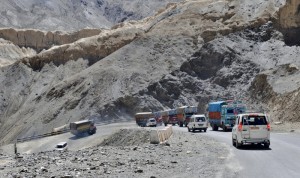 |
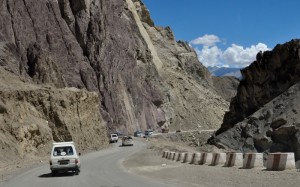 |
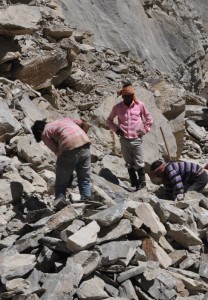 |
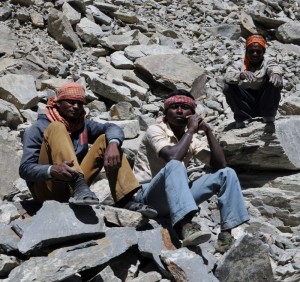 |
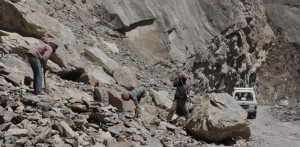 |
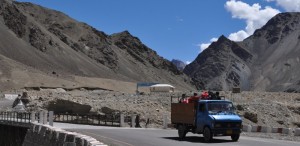 |
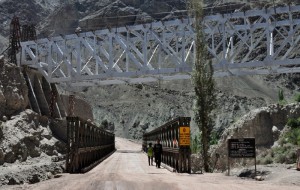 |
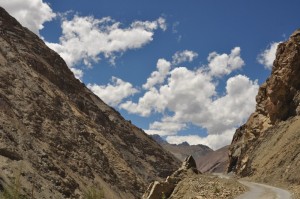 |
The monastery (3450m) was founded by Lama Tsultim Nima (1796-1872) in 1833. The Shudung temple was the first one built on the site and has a stupa with his relics. His wife and sister who also renounced worldly life had established the Chulichan Nunnery close to the monastery. The three-tier Thecgchen temple was built in 1921 and a monastic school complex was added in 2004.
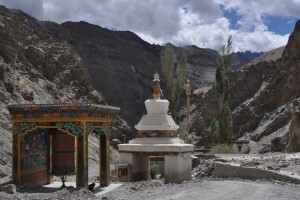 |
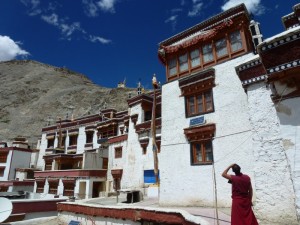 |
Unfortunately the complex was empty as the monks and nuns had gone to Leh. It was very hot and I was exhausted after climbing a flight of staircase. The doors were locked and I was disappointed. A French couple with a local guide somehow managed to find a monk to open the door of the Thecgchen temple and invited me to join them. We also visited the Shudung temple.
After 30 minutes’ visit, I was back on the road and crossed the Indus for the fourth time. Instead of turning left heading to Alchi, the driver turned right at the junction to follow the left bank of Indus all the way to Mangue.
Alchi, Mangue and Sumda Chun (now in Zanskar district), three villages in lower Ladakh region constitute the ‘Alchi group of monuments’ famous for their unique style and workmanship. The Mangue village high up the mountainside is picturesque. The dilapidated monastery is not large and several workers were paving the courtyard. They kindly found me the young man with the keys.
I first went into the main hall which is dark. The walls covered with murals are in poor condition. The man then opened a small door letting me into another hall on the right. I had to lower my head to get in. When I lifted my head, I set sight on a magnificent two-tier statute! As it is a tiny hall, it makes the statute look even more imposing and awesome! I saw the hall on the left of the main hall was open and went in. A group of artists was repainting the walls and restoring the statutes.
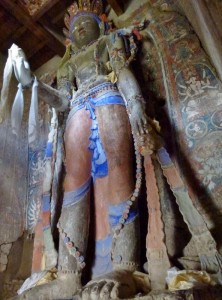 |
I got back to the guesthouse after 4pm. The driver had an exhausting day covering over some 120km. I was hot and took a shower before going to the world famous Alchi Gompa. The monastic complex was built by Rinchen Zangpo between 958 and 1055 on his return from India. However, inscriptions in the preserved monuments ascribe it to a Tibetan noble called Kal-dan Shes-rab later in the 11th century.
The complex (chos-‘khor) of temples is the only one in Ladakh to be built on ground level unlike all the rest that are constructed on cliff-tops or hill-tops. Rinchen Zangpo made a citation about the monastery in his biographies saying that he had brought 32 sculptors as well as wood carvers from Kashmir to build the monastery. It has a strong influence of Indian architectural style. Along with Phugtal Gompa in Zanskar and Tabo Gompa in Spiti, it is a remnant of Indian Buddhism in Ladakh.
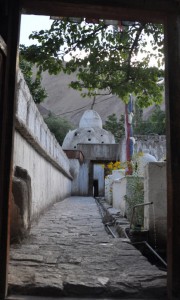 |
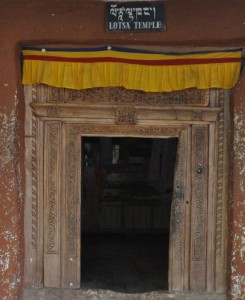 |
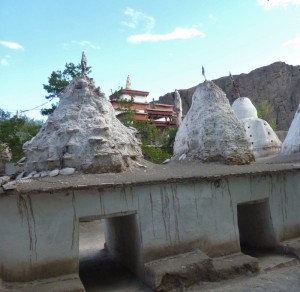 |
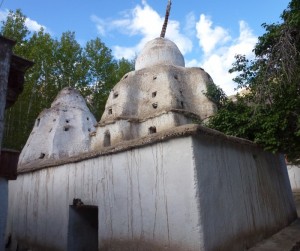 |
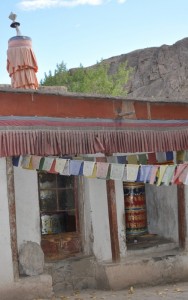 |
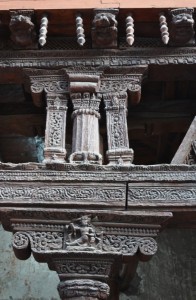 |
It is one of the oldest monasteries in Ladakh and administered by the Likir monastery. The complex comprises six main buildings namely Dukhang or Main Assembly Hall, Sum-tsek or the three-tiered temple, Manjusri Lakhang temple, the Lakhang Soma, the Lotsabha Lakhang temple and Kanjur Lakhang.
The complex is a treasure and the richest in terms of painting and images in Ladakh. It is invaluable to those interested in architecture, art and culture, history of Ladakh and Buddhism. For example, Dukhang and Sum-tsek are built in Kashmiri style. The artistic and spiritual details of both Buddhism and Hindu kings of that time in Kashmir are reflected in the murals belonging to the 11th and 12th centuries and pre-date the Tibetan styles of painting found in other gompas. These are some of the oldest surviving paintings in Ladakh. The complex also has huge statues of the Buddha and elaborate wood carvings and art-work comparable to the baroque style.
There are several chortens in the courtyard. The earliest recorded chortens are the Great Chorten and the Small Chorten to the early 13th century, following the building of the Sumtseg. These chortens are decorated gateways that are considered unique to Alchi with historical link to other monuments. Some chortens have ancient painting on the ceiling.
I had a vegetable fried noodles for dinner and prepared my travel notes before going to bed.
August 22 Thursday: Alchi – Leh
I got up before 6am and had a breakfast before 7am. The minibus for Leh left at 7:45am with a dozen of well-dressed high school students whose secondary school is located in Saspool. I talked with a pretty Ladakhi girl who speaks good English and is not shy. The bus picked up many passengers in Saspool and Basgo who seem to know each other. They chatted and laughed all the way to Leh.
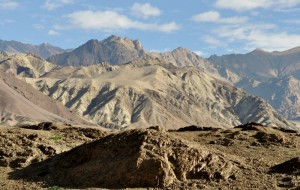 |
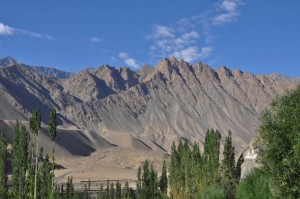 |
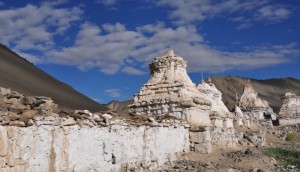 |
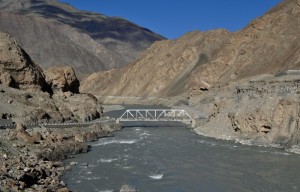 |
I arrived in Leh around 10am and was surprised to see a long queue of Ladakhis lining up in the main street. There was no car too. A policeman told me that Dalai Lama would be passing through in his car soon. I stayed for five minutes and as there was no sign of his entourage, I decided to proceed to the Chopsticks Noodle Bar.
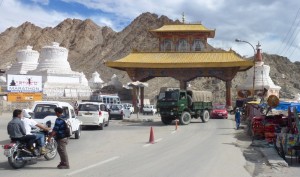 |
Juma greeted me warmly and arranged his nephew Thupstan to drive me to see the Thakhok, Chemrey, Hemis and Thikse monasteries and the Shey Palace. Before I set off, he treated me with my second breakfast with roti, chai and omelet.Today we drove along the Leh-Manali Highway which is much better without pot-holes or repair works. I passed by Dalai Lama’s palace and learnt that Dalai Lama had been in Leh since July 29 and would be leaving on August 22. I wonder whether he would be taking the same plane as our group. There are many military camps along the road.
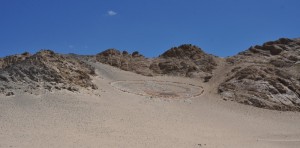 |
|
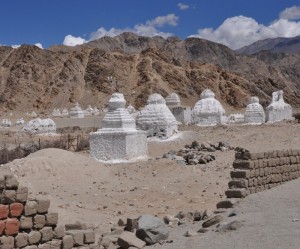 |
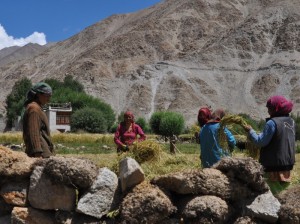 |
We first went to the Thakhok Monastery which is about 50km east of Leh. The Indus River is wide at this end and town along the highway such as Shey, Thikse and Karoo are larger and more prosperous. We turn left off the highway at Karoo into the Thakhok valley which is green with cultivated fields. Some Ladakhis were busy harvesting. Unfortunately, the monastery was closed as someone of importance had passed away.
The second stop was Chemrey Monastery not far from the Thakhok Monastery. Perched on a hilltop, it looks impressive and photogenic with fantastic views of the valley. Thupstan showed me around and we saw some nice religious artifacts in the museum.
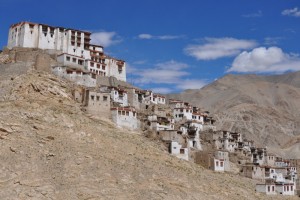 |
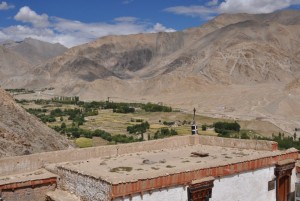 |
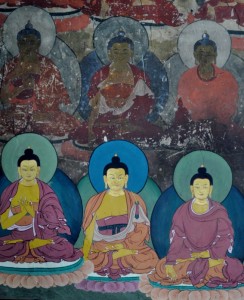 |
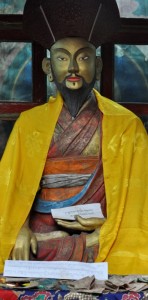 |
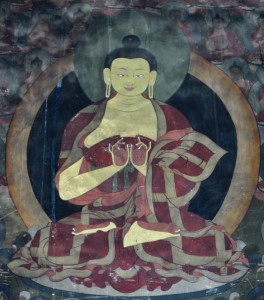 |
Then we drove back to Karoo, crossed the Indus and reached the Hemis Monastery on a mountainside. It has a 1000-year-old history and Naropa, who is considered the founding father of the Kagyu-lineage of the Himalayan esoteric Buddhism had meeting with his yogi teacher Tilopa here. Taktsang Repa, a great yogi of the Drukpa lineage arrived in 1630 and the monastery was re-established by King Sengge Namgyal in 1672. The Drukpa Lineage has more than a thousand monasteries in Tibet, Bhutan, Ladakh and other parts of Himalayas. This monastery is the richest and largest monastic institution in Ladakh. A festival honouring Padmasambhava (Guru Rinpoche) is held every June.
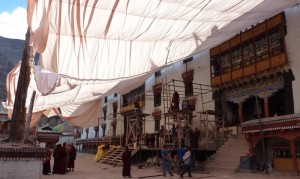 |
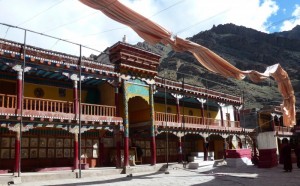 |
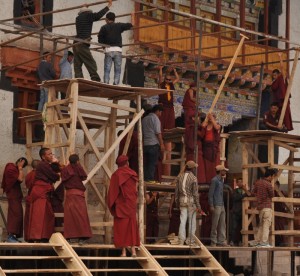 |
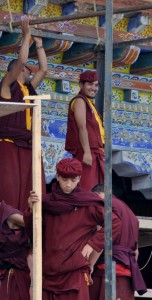 |
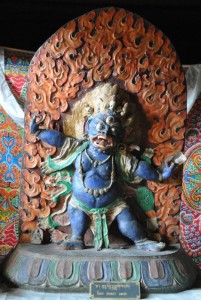 |
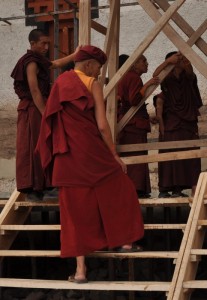 |
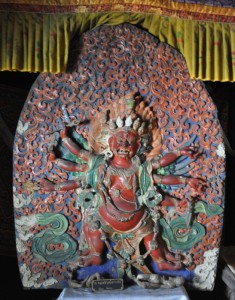 |
A large stage was being constructed in the main courtyard for the 5th Annual Drupka Council to be held from August 29 to September 5. Some halls were closed. I spent some time in the museum which has an excellent collection of historical and religious artifacts including some Buddha statues of 3rd or 4th century AD from Gandhara, an ancient Buddhist kingdom (in present day Pakistan and eastern Afghanistan) which existed from the first millennium BC to the 11th century AD).
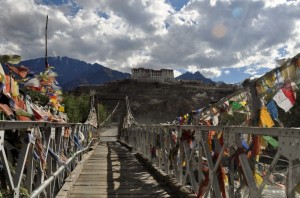 |
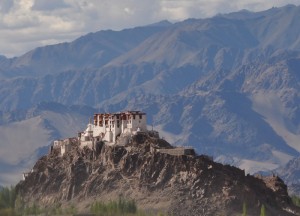 |
My original plan was to visit the Thikse Monastery and Shey Palace. The former belongs to the Gelukspa order and is said to be the most photographed monastery in Ladakh. Unfortunately, there was a street festival in Thikse and Thupstan had to take a side road and cross the Indus. I saw Thikse from the other side of Indus. Thupstan had to drive back if I wished to visit the monastery. It was already 4:30pm. I was hot and tired and wanted to return to Leh. I was back in Leh at 5pm and paid 2000 rupees for the 6 hours’ drive covering over 100km.
I went to the computer centre for half an hour. But my Hotmail account was locked again! I wanted to buy a couple of pashmina shawls and asked Juma to take me to a reliable shop. At the end, I brought a high quality one from a co-op which guarantees the quality and origin of the products. I got three more shawls from another shop! It was almost 7:30pm when I got back to the Snowland Hotel. I was glad to see my group at dinner and anxious to find out about their ascent to Stok Kangri the day before. They had good weather. Setting off at 1am, eight members reached the summit at 7:30am. On the way down, the trek was got slippery and they had to be roped up. We were all in high spirit and had beer for the first time since the trek.
August 23 Friday: Leh – New Delhi
Our flight took off after 10am. I sat next to a window and had a scenic flight. The young Himalayan mountain ranges are beautiful and magnificent. I suddenly saw a pointed white top at the far right horizon soaring above the clouds. Wow, it must be the summit of K2, world’s second highest peak at 8611m.
We had lunch at Florence Hotel. The highlight of the day was the trip on an auto-rickshaw (commonly known as tuk-tuk) to the Imperial Hotel for high tea. We had ten persons and took three tuk-tuks. One driver told me to sit with him in the front! According to our driver, there are 18,000 tuk-tuks in Delhi. He paid 120 rupees for a gallon of fuel which can go for 30km. We paid 50 rupees each for the ride. This is a real Indian experience!
Opened in 1931 as the capital’s first luxury hotel, the Imperial Hotel has the largest collection of colonial and post-colonial art and artifacts anywhere in Delhi. The building designed with a mix of Victorian and colonial architecture in art deco style is set in a lush green garden at Janpath close to the Connaught Place. John and I shared a tea set (800 rupees each). We sat in the bar which walls are covered with historical pictures. I can image the glorious days of the British Empire and the colonial life style before India’s independence in 1957.
August 24 Saturday: New Delhi – Hong Kong
Half the group had already departed for the UK. My flight to Hong Kong would be departing after 11pm. After breakfast, Pip, Collins and I took a tuk-tuk to the Red Fort.
Built from 1638 to 1648 by Shah Jahan as a residence, it became the palace for Shah Aurangzeb who moved the capital from Agra to Delhi in 1658 and ruled for 49 years till his death in 1707. Significant phases of development took place during his reign.
The fort lying along the Yamuna River and enclosed within a 2.4km-long defense wall covers an area of about 255 acres. It showcases the high level of art form and ornamental work which is a synthesis of Persian, European and Indian art rich in form, expression and colour.
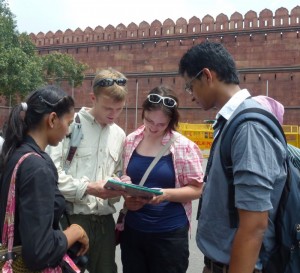 |
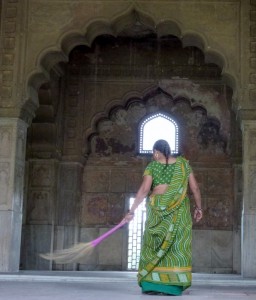 |
The main buildings include the Lahore Gate (the main entrance leading to the domed covered bazaar called the Chatta Chowk), Diwan-i-Aam (Hall of Public Audiences), Diwan-i-Khas (Hall of Private Audiences where the famous Peacock Throne was once placed over a marble pedestal), zenanas (women’s quarter), Moti Masjid (Aurangzeb’s private mosque) and the Hammans (Royal Baths). Both the Naqqar Khana (Drum House) and the Mumtaz Mahal (one of the zenans) are now used as museums. (During my visit to Iran in December 2010I saw the Peacock Throne taken by Nadir Shah in 1739 to Persia.)
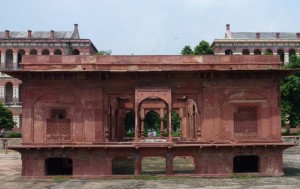 |
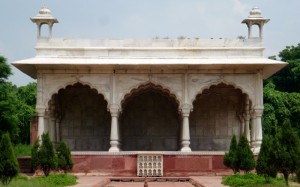 |
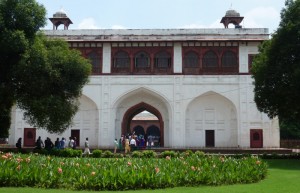 |
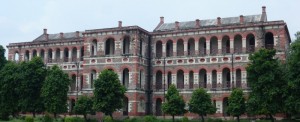 |
The garden is beautifully laid out with many pools and water channels. I visited it in 1978 and was impressed then. But I am disappointed this time: there is no water in the water channels and visitors are not allowed into the Diwan-i-Khas and the once lavish Rang Mahal famous for its gilded decorated ceiling and marble pool. This is a World Heritage Site but I do not think it has not been properly maintained.
At noon, I met up with Pip and Collins and took a tuk-tuk to the Connaught Place. The temperature was round 35-37°C. It was so hot that I dropped the idea of going to a couple of museums. Instead, I took refuge in a book store with air-conditioning and finished reading Michael Paul’s book entitled ‘Hemingway Adventure’. I enjoy reading about the places and countries where Hemingway had lived in his life and got his inspirations for his books.
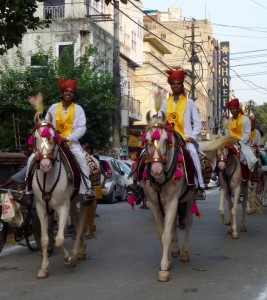 |
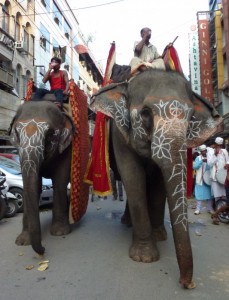 |
A car picked me up before 7pm and I was at the airport before 8pm. After spending a couple of hours in the lounge, I boarded my flight and was back in Hong Kong at 7am the following day.
Remarks This’s my fifth trip to India and I have spent 18 full days in Ladakh. Travelling is essential for life-long learning and I have indeed learnt something about Ladakh and myself as a traveller.First, Ladakh is worth visiting as it is totally ‘un-Indian’. It is a mountain kingdom: its scenery, people and culture remind me of Nepal and Tibet.Second. India seems hysterical about national security and China. Chinese (whether from Mainland China, Taiwan or Hong Kong) are not allowed to go to the Khardung La and the Pangong Lake which are close to the border with China. From Lamayuru to Karoo along the Srinagar- Leh and Leh- Manali highways (about 150km), there are a dozen of army camps. I saw 60-80 army vehicles on August 21 alone while on a mini-bus to Alchi.
Third, though I have visited many famous temples and monasteries in Tibet and Qinghai in China, Nepal and Bhutan, I had a fantastic monastery tour in Ladakh. Though the temples, chortens and monasteries are comparatively modest, they are worth seeing. The monasteries with the exception of the Alchi Gompa and the Mangue Monastery all perch on steep mountainside or hill tops. They look spectacular. The architectural styles, paintings and sculptures found in the Alchi and Mangue monasteries are most interesting with strong Indian influence. I was expecting to find strong spiritual and religious atmosphere in monasteries as I had seen in China, Nepal and Bhutan. I was however disappointed. When I was in Alchi, Lamayuru, Rizong and Mague on August 21, most if not all the monks had gone for Dalai Lama’s teaching in Leh. The monks in the Hemis Monastery (the largest and richest in Ladakh) were busy preparing the stage for a world conference and some halls were closed. Perhaps had I gone for Dalai Lama’s preaching in Leh (which was conducted in Tibetan), I might have had different impressions.
Fourth, Ladakh is known for its topography and majestic scenery. I am impressed by the splendid scenery in the Markha Valley and along the road from Lamayuru – Alchi – Leh – Thakhok. The Himalayan mountain ranges here are different from those in Tibet, Nepal and Bhutan. Trekking is the only way for me to fully appreciate the magnificence of the scenery which is ever changing. The land formation including the shapes and colours of the rocky mountain ranges, deserts, plateau, gorges and river valleys and the picturesque cultivated fields, herds of sheep, ruins and scattered settlements are breath-taking.
Finally I have learnt more about my ability (or rather inability and weakness) as a trekker and traveller. I am not interested in shopping and prefer strolling leisurely, meeting locals, soaking in the atmosphere and taking pictures of scenery, flora and fauna and people in action (but not myself). As a professional tourist for the past three years, I have joined a number of tours and trekking trips. I had a most enjoyable group trek to the Everest Base Camp and Mustang in Nepal in 2010 and 2011 (Both trips have been posted in the website). On both occasions, I walked leisurely at my own pace and totally enjoyed the trekking experience. I have also taken several private treks and reached Mt Kenya and Mt Meru in 2011 with my own guide.
I am not totally satisfied with this trek for several reasons. I have made a mistake and over-estimated my ability. I am too slow for a group trek. I might be able to scale Stok Kangri it if I had taken a private trek or with a small group. I was not feeling well and thought I might have a heart attack. The weather was disappointing: it rained for a week. It was misty whenever we reached a pass!
I am glad I have made the right decision and returned to Leh. This is not without cost as I had already paid for the climbing and the gears and had to arrange my own trip in Leh and Alchi. But I might have saved my life! In any case, my 3-day trip at the end of the trek is most enjoyable and memorable.
Ladakh is fascinating and I love to return one day. I would like to travel by road from Srinagar, take a trek in the remote and less travelled Zanska Valley and return to Delhi by road from Manali. Another dream journey!


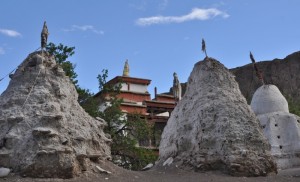
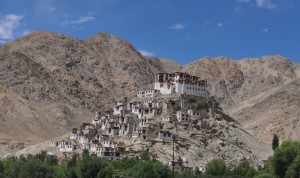
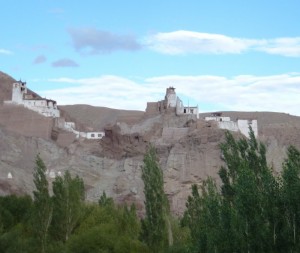
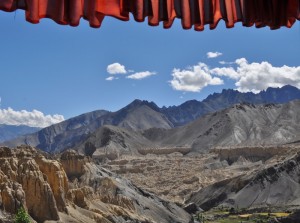
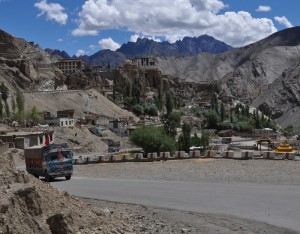
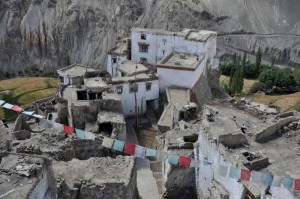
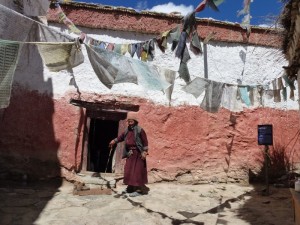
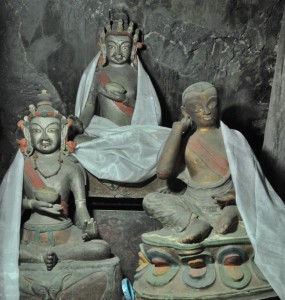
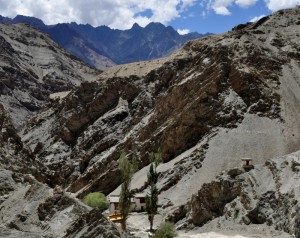
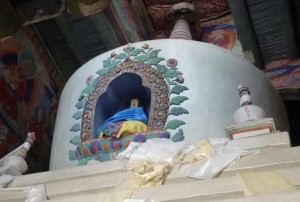
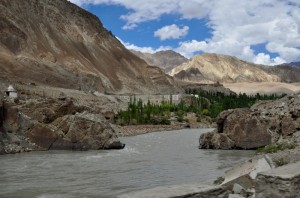
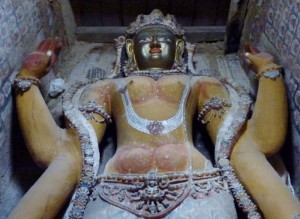
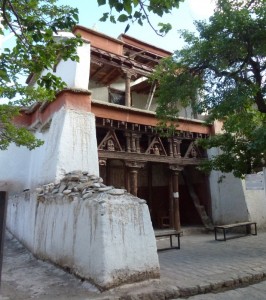
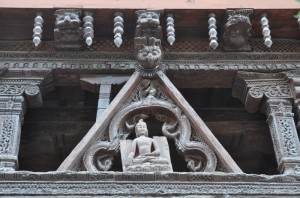
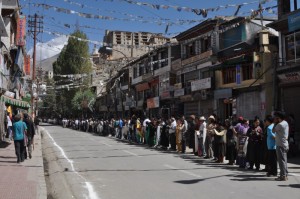
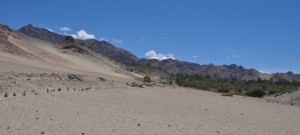
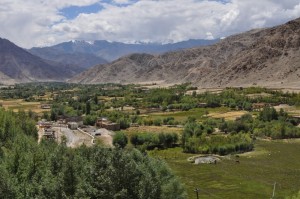
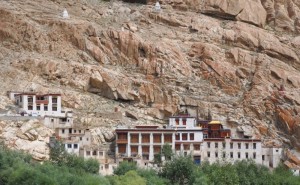
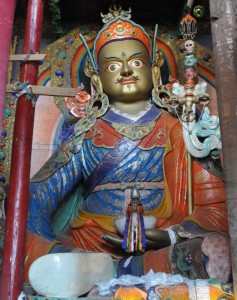
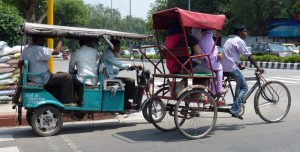
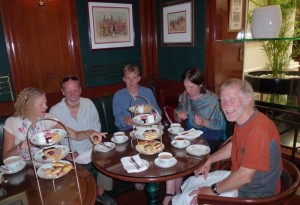
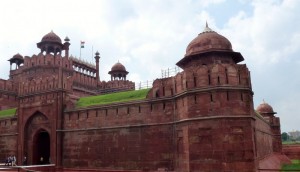
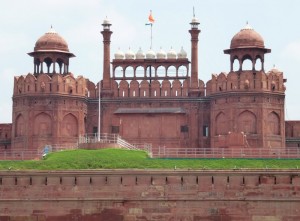
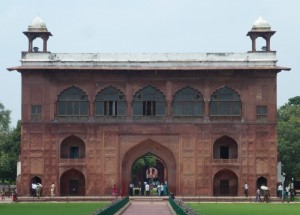
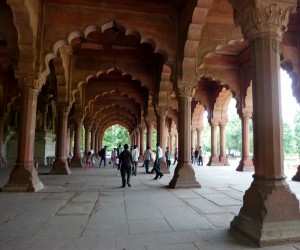
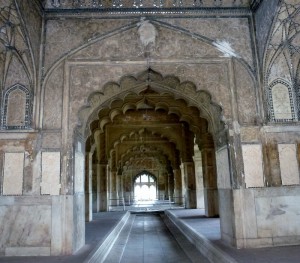
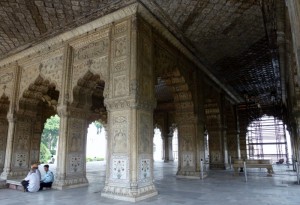
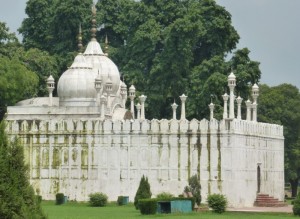
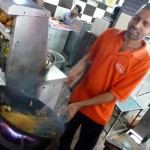
A very interesting experience. Too much hardship and high altitude for me, though. I admire your adventurous spirit. Your narrative is good reading. Look forward to your next adventure.
Sarah,
The fabulous photos of mountain scenary, the impressve architecture, the artistic carving, the unexpeced sick attack, the adventure with altitude and local encounters, I read all 4 parts in one shot.
The swift river reminds me of hardship that some Taiwanese endure especially duirng typhoon seasons.
The monastery let me wonder of the spiritual stories. The grand and impressive buildings bring my thought to India’s colonial history and her caste system …Thanks for you sharings.